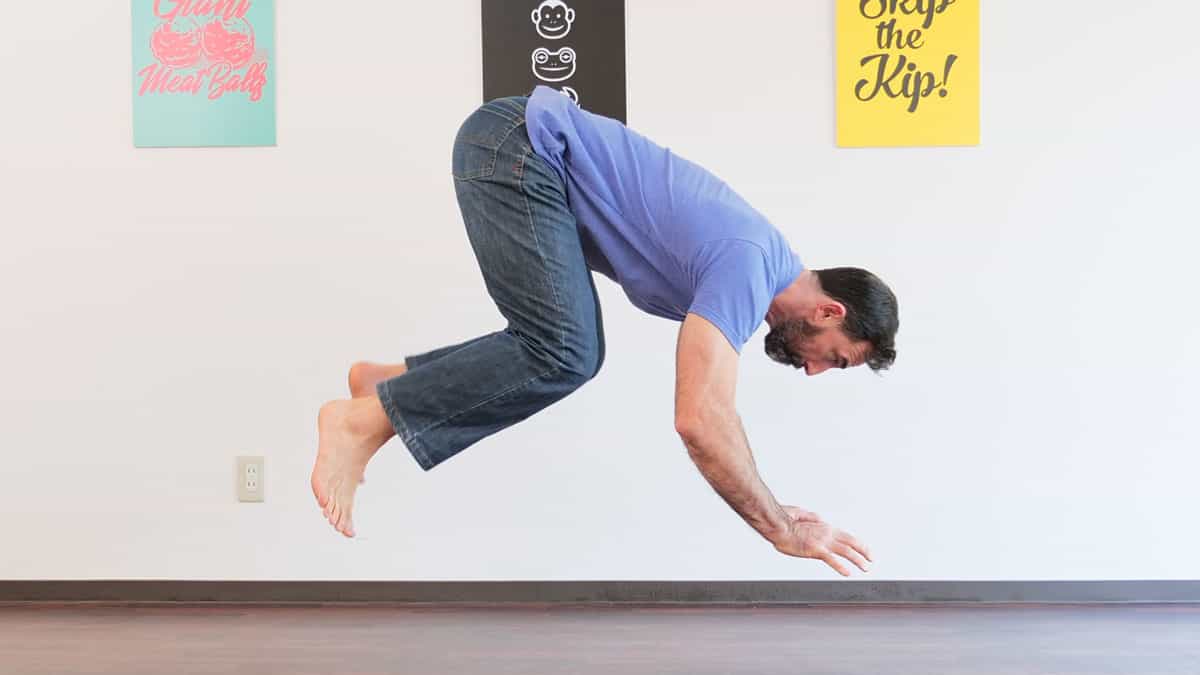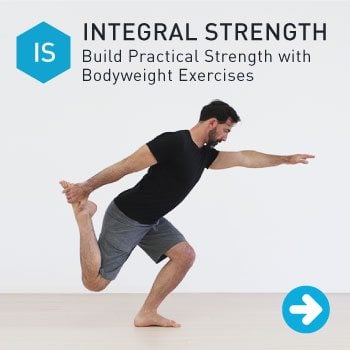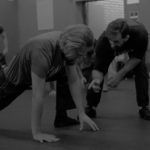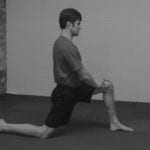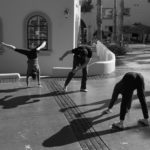Are you happy with your strength?
The last time you lifted something heavy, did you feel like you were a couple pounds away from needing to call 911?
Whether it’s a grocery bag brimming with essentials or your toddler eager for a piggyback ride, it’s essential to feel strong enough for everything life throws at you, from the endless chores around the house to all the rest on your full plate of adult responsibilities.
And what about the fun stuff?
Sprinting down your office manager in the annual spring flag football game, trying your hand at your gym’s new climbing wall, or even smacking the heck out of that pickleball, it’s great not being held back by your strength.
The feeling of being strong is a worthy goal. A wholistic, integrated total body strength that helps you move well is one of the keys to healthy longevity.

There’s lots of choices out there; dozens of weight machines at the gym, the good old standbys of barbells and dumbbells, the newer trends of ropes and various heavy balls (kettles, medicine, clubs, and maces).
If you’ve found what’s working for you that’s great! You don’t need to read any further.
But if you’re dissatisfied, or maybe just don’t see the point of picking things up just to put them down over and over again, let’s figure out what’s a better choice for you.
The Conventional Route Didn’t Cut It? Time for a Change
Whether or not you just started a couple of months ago, or you’re a veteran fitnessser. You’ve likely gone through a dedicated strength training program or class at some point.
And you may notice a few things pretty quickly:
- You might feel stronger, but really only on machines or specific exercises. It doesn’t really translate to outside the gym.
- There are random “standards” you have to meet before you could move on to the next thing. And that tends to hold you back when you probably are just fine to go forward.
- You just feel bleh about the whole thing in general.
Well just like the infomercials of old, “there has to be a better way!”
And there is!
Unlike with those plastic kitchen gimmicks that promise much and deliver little; you’ll see right away how these concepts align with what meaningful strength is to you.
The truth is, if you want to be strong for dynamic and purposeful activities that are immediately useful in your real life, your strength training needs to embrace coordination and complexity in a wide variety of movement.
Skill-Based Training: Crafting a Body Equipped for Every Challenge
What is it exactly? Put simply skill-based training is a systematic method to train your body to perform particular movements. Here’s an example of this in action:
In this video, I show multiple variations of the Inverted Press, a skill we teach in several of our programs.
You can see it is definitely an exercise to strengthen your upper body muscles. And though these (shoulders, chest, arms) can be worked with “overhead presses” with machines, barbells, or dumbbells, the Inverted Press is a much better choice for practical fitness.
First, though the use upper body is most apparent, this is truly a full body exercise. From keeping your balance to maintaining the proper body positioning, name any muscle you know and it’s likely involved in making this move happen.
This is what’s at the heart of working on skillful body movements, their very nature means they involve your entire body.
And that’s exactly what you need to build strength that translates to the real world.
As long as you are conforming to the fundamentals of the movement, there are innumerable variations that you can choose to best fit your individual needs and goals. And you don’t need to stay with one choice forever!
They should absolutely be changed whenever your needs/goals shift.
In the video you see that I demonstrate a bunch of things: shorter/longer ranges of motion, surfaces of support, weight shift, just to name a few. This variety isn’t just for the sake of it, they provide you with the choices to keep you moving forward in your training.
Some days you’ll feel better and some days will feel like a drag.
You need a program and method that accounts for this. This approach will help you get strong in a way that traditional strength programs can’t, and it’ll directly enhance your performance in your favorite activities (or those you simply have to do).
Leet’s look at how this works so you can incorporate it into your training right away…
Reboot Your Strength & Agility
Build strength and mobility with 4 key movement patterns most workouts neglect. Yours free. Just tell us where to send it.
Moving Past Basic Lifting: The Why of Skill-Based Strength Training
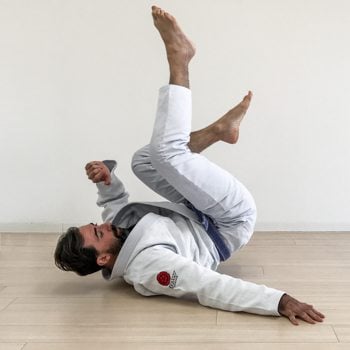
If you’re into active sports like martial arts, you’re using skills on a daily basis.
Whether we realize it or not, most of the activities we engage in on a daily basis are in fact skills.
Even walking is a skill!
We just don’t think about it that way anymore since most of us have mastered it before we were two years old.
It’s an easy example to describe dribbling, passing, and shooting a basketball as a skill. That just makes sense. But carrying a load of groceries up the stairs while one of your kids is pulling at your jacket is just as much of a skill, and probably more dangerous!
And of course, if you’re into any sport or other physical pastime, body skill development is very important. Just don’t think that those are the only situations where motor skills are important.
Basically every physical activity we do involves some aspect of skill. And that means you can make them better and easier to do.
Most strength programs out there don’t incorporate full body skill-based work. While they may help you get stronger in certain ways, that strength doesn’t necessarily carry over to your favorite activities.
Pushing big weights up in a bench press certainly improves your ability to put up big weights in a bench press, that’s the point of it! But is that what you really want? And where do you go from there? You just work on putting another few pounds?
A strong bench press can be beneficial, but only up to a certain point, which might be lower than you think. Beyond that, it doesn’t significantly contribute to making your life easier.
Let’s get away from thinking “how much” strength we have and more towards how can we best express that strength.
So, how can you apply skill-based strength training to your routine?
Master Your Body: Improving Performance with Skill-Based Strength
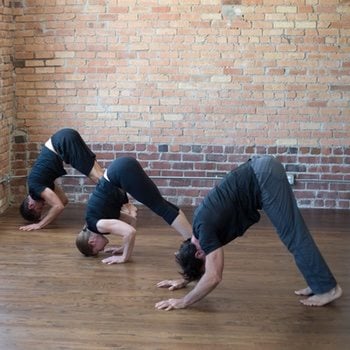
In our Integral Strength program, we include assessments that help you choose the right starting point.
Here’s how we approach it in our Integral Strength program:
- We start with an assessment that not only shows you where you need the most work, but also helps you determine what level to start at.
- Then, throughout the program, we give you access to all the progression levels so that you can test things out as you go and move on to a different variation when you feel ready.
- We emphasize control and quality of movement above any suggestions for sets/reps.
All of this helps you to continually improve your skill levels across different body movements and planes of motion, so that by the end of the program, you have made progress in the skills you need for the activities you love.
Let’s look at each of these elements in detail so you can see how this can be applied to whatever strength training you do:
1. Opening Moves: Identifying Your Baseline
Before starting a strength program, it’s important to always start with an assessment. This is a baseline where you rate your quality of movement from the beginning, and thus, you know what you need to be working on and can evaluate how you are improving.
In our Integral Strength program we include a detailed assessment of many essential exercises, but here are 3 exercises from that assessment, which will help you gauge your current level:
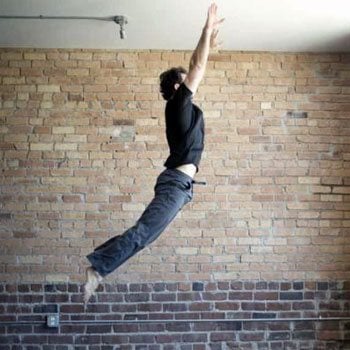
Broad Jump Assessment
by bending your knees and trying to jump as far as you can. Land softly with your knees bent. Measure how far you jumped. Your third jump is your starting point.
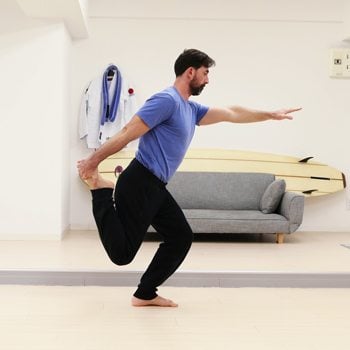
Shrimp Squat Assessment
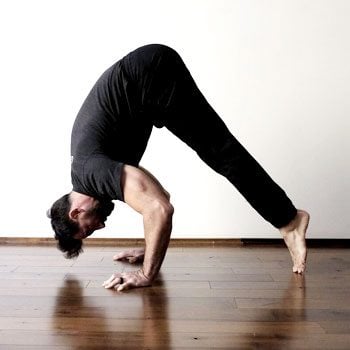
Inverted Press Assessment
These don’t all use the same type of strength, but going through these assessments will give you a good idea of how much work you have to do on your strength, and what’s most difficult for you.
You can use the following scale to determine how well you performed with these three exercises:
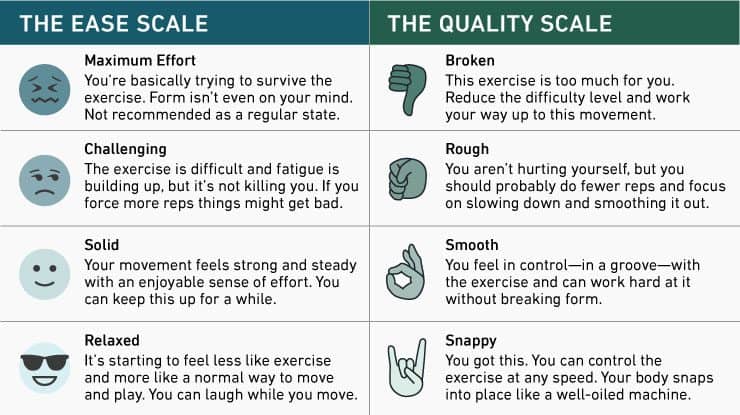
If your “Ease” level is at maximum or challenging and your “Quality” level is at broken or rough, that’s a sign you need to spend some time working on your strength.
Pay attention to what specific aspects of these exercises were challenging–Did you land with sloppy form when you practiced your jumps? Did you have a hard time controlling your movements in the shrimp squat? Was it hard to keep your elbows in on the inverted press?
We include this type of assessment in our programs because when you have a full picture of your current abilities, you can make sure your efforts match your needs.
2. Be Adaptable: No Rigid Exercise Progressions
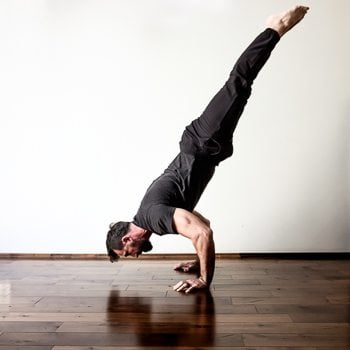
If you’re stuck at a lower progression of an exercise, you need a more flexible approach.
The problem with most strength programs is they have standards that almost encourage you to get stuck. For example:
- A bodyweight strength program may have you work up to 3 sets of 20 push-ups before moving on to diamond push-ups.
- But what if you get stuck at 2 sets of 15 push-ups? You just have to stay there until you can bang out those 60 reps before you move on.
Instead of aiming for an arbitrary standard, wouldn’t it be better to allow for individual differences in how to progress?
For instance, maybe after working up to 10 perfect push-ups, you decide to try out the next progression and find you can do it.
Why would you continue working on rep after rep of the level you’re on? Why not start working on the next level?
Conversely, you may find that the next level is too hard, even after you’ve hit the “required” sets/reps. Does that mean you just stay at the lower level forever?
A skill-based approach allows for far more flexibility, as there are infinite possibilities with how you can progress and modify skill levels.
Instead of using arbitrary measures, you can make progress by making incremental improvements to your form, changing leverage, going deeper into a movement, or any number of infinite variations.
This flexible approach to progressions will help you hone your skills so that you are better at the activities you want to be better at.
3. Make It Pretty: Emphasize Control and Quality
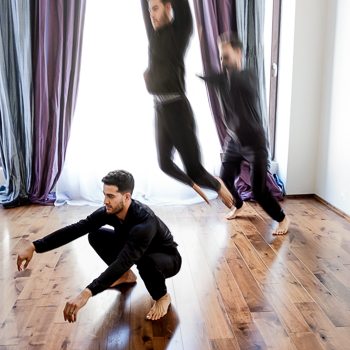
Strength without an emphasis on control won’t lead to the best results.
Our ideal of strength necessarily includes body control and movement quality. Whereas bodybuilding strength emphasizes isolated muscle control and weightlifting strength emphasizes controlled technique to lift the most weight, our emphasis is on steady, full control of our bodies throughout whatever training you do.
If weightlifting is your activity of choice, then isolated movements might be what you need. But if you want to be strong for the complex, coordinated movements required in sports, martial arts, and other activities, then that’s not gonna work.
It comes down to biology.
Muscle systems trained in isolation through limited ranges of motion don’t develop the neural framework or the resilience for complex movement.
When your sole purpose is to hit a certain number of reps, the quality of your movements will most likely suffer, but for skill development, the quality of your movements has to be of the utmost importance.
This is why we teach strength using a time-based approach, rather than aiming for a certain number of sets and reps.
With this approach, you’d set your clock for a certain amount of time (let’s say 1 minute) and do as many reps of the given exercise as you can with perfect form within that time. This means taking as many breaks as needed and monitoring your form the whole time, as opposed to an AMRAP (as many reps as possible) approach.
Timed sets encourage adjustments in speed, range of motion, and technique adjustments better than aiming for specific repetition ranges. This improves quality of performance.
Life-Ready Strength: Build the Skills for Your Everyday Challenges
If you’ve been following a traditional strength program but haven’t seen much carry-over into the activities you care about, it’s probably time for a different approach.
Most strength programs rely on arbitrary measures of progress that don’t improve your skill levels and, often, can lead to stagnation and frustration.
A flexible, skill-based approach is much better suited to the kinds of activities most of us are engaging in on a regular basis.

Our Integral Strength program is designed with this in mind.
One client of ours, Topi from Finland, shared that “the time-based and quality-focused training of Integral Strength has really made a difference. The fact that there are progressions from the really simple to the hardest level allow me to scale the training a lot, depending on my energy levels of certain days.”
Use Skill-Based Training to Build Practical Strength
Integral Strength is a skill-based strength program that helps you build practical skills and strength that carry over into your beloved daily activities.
